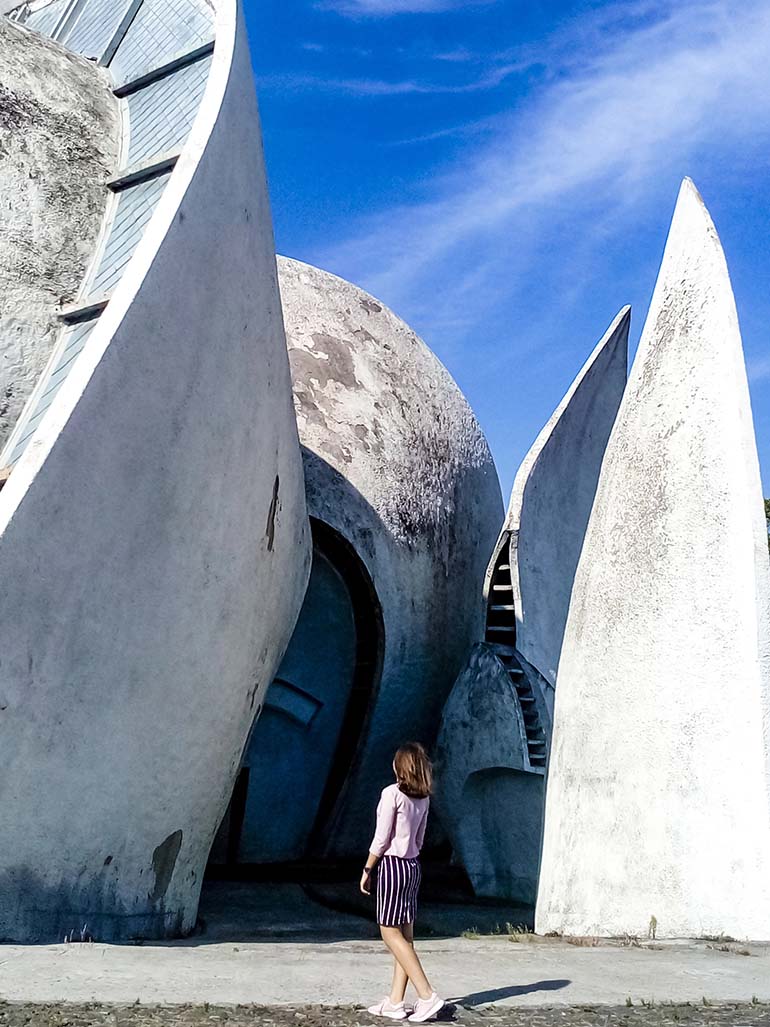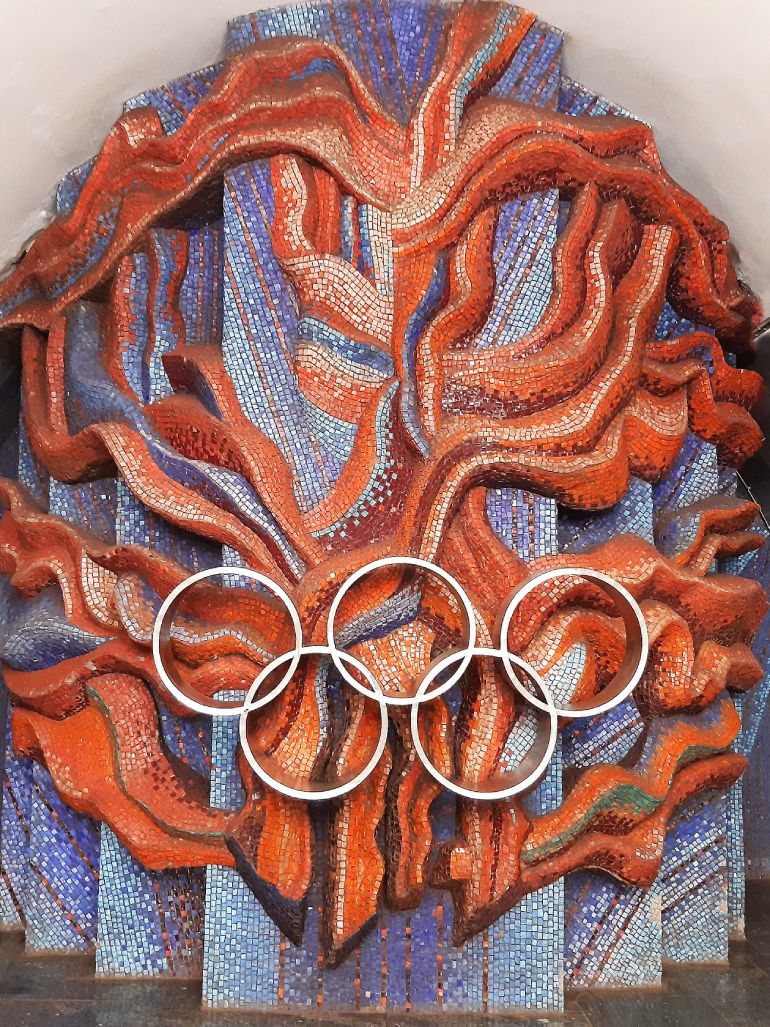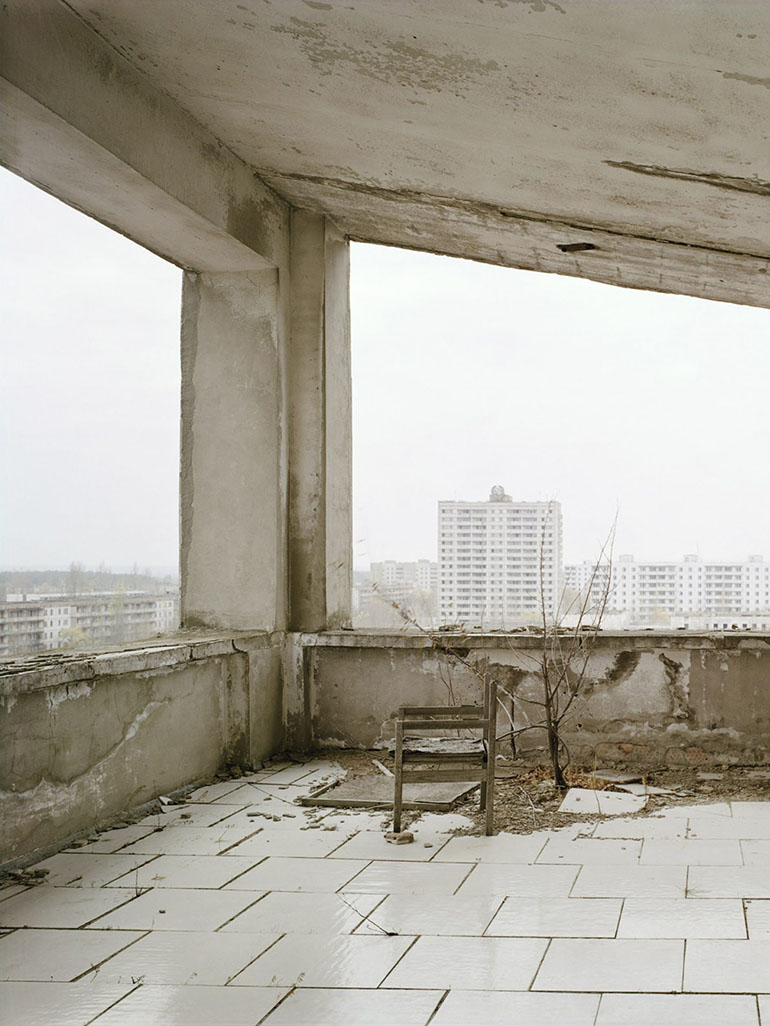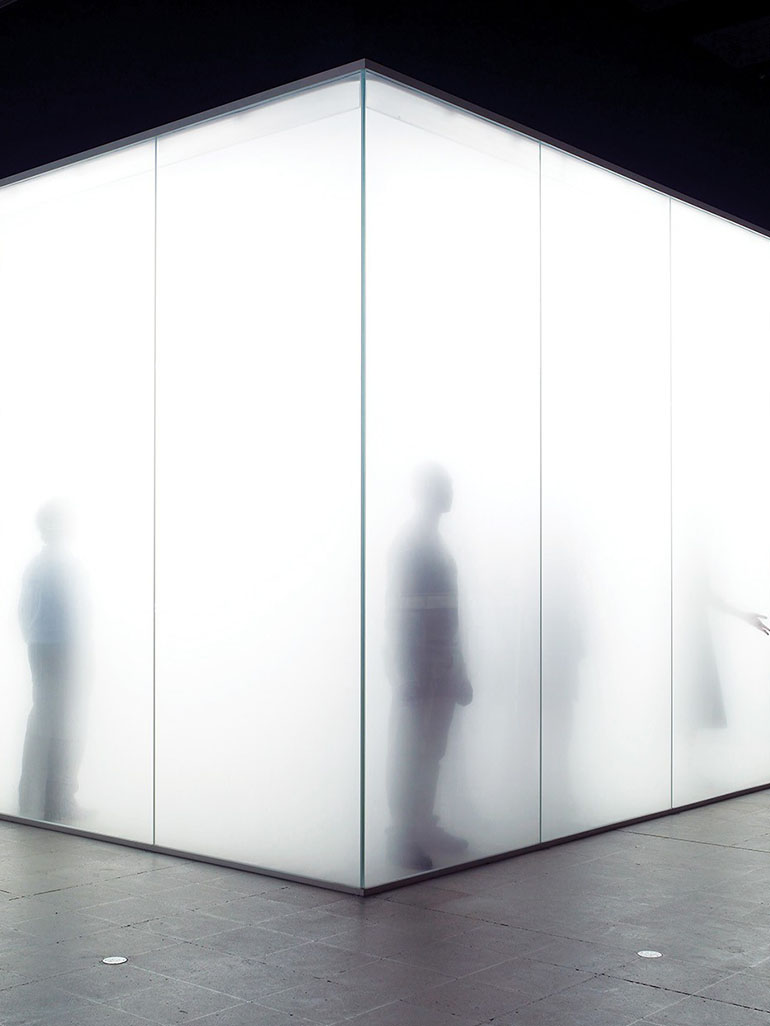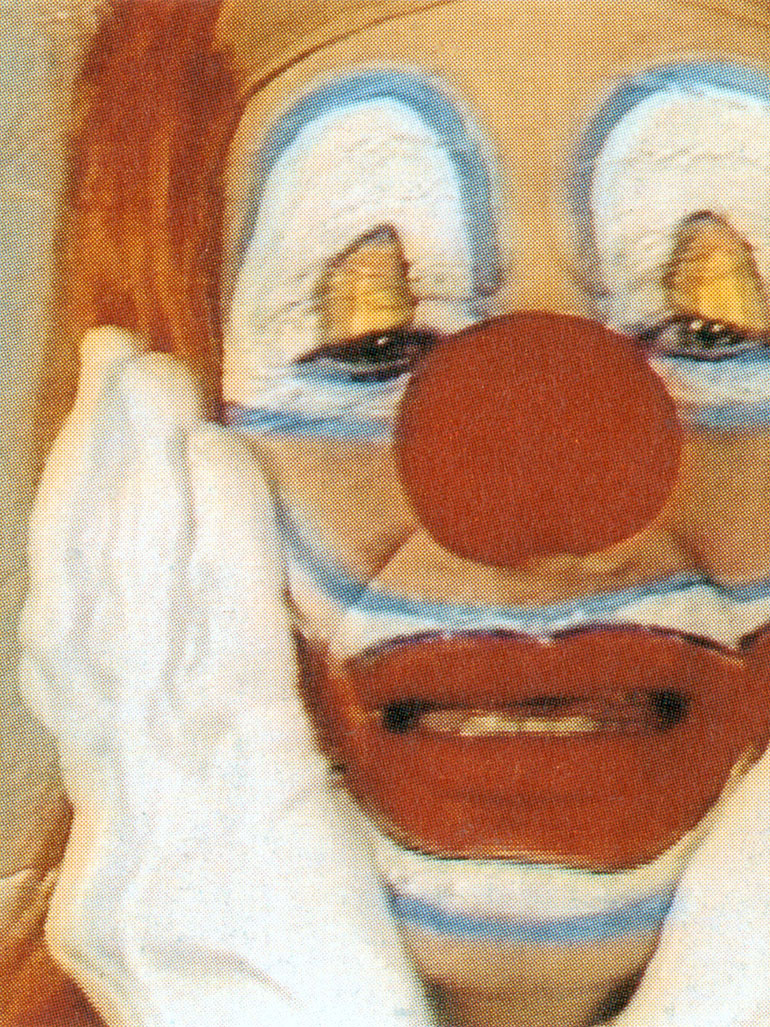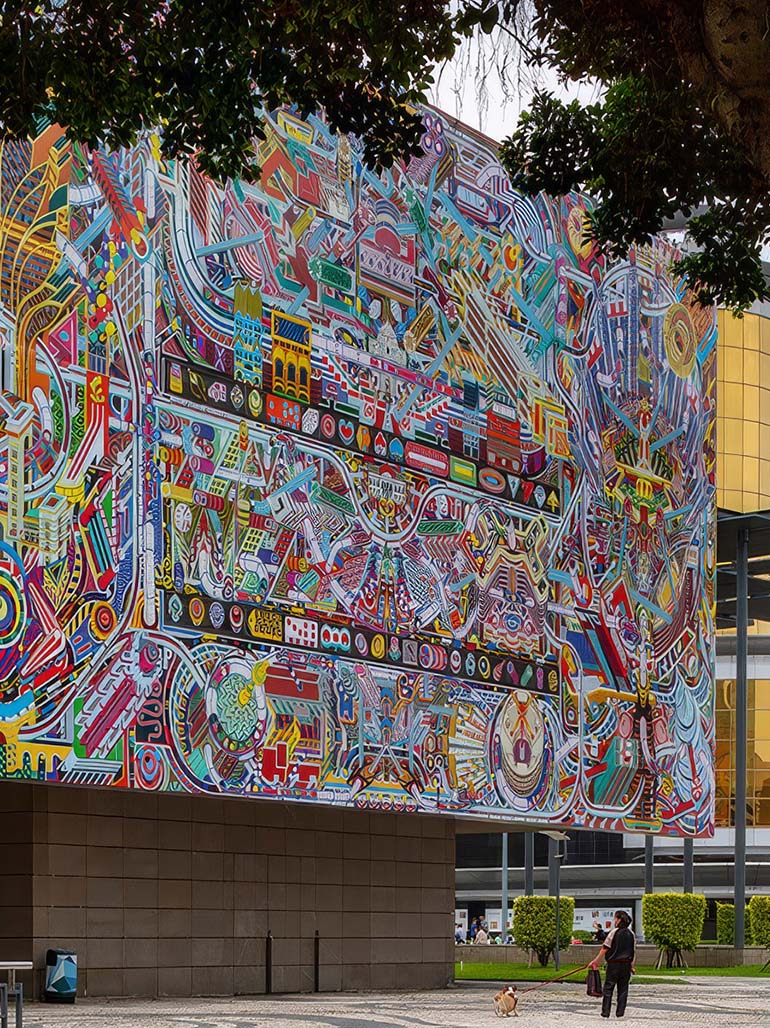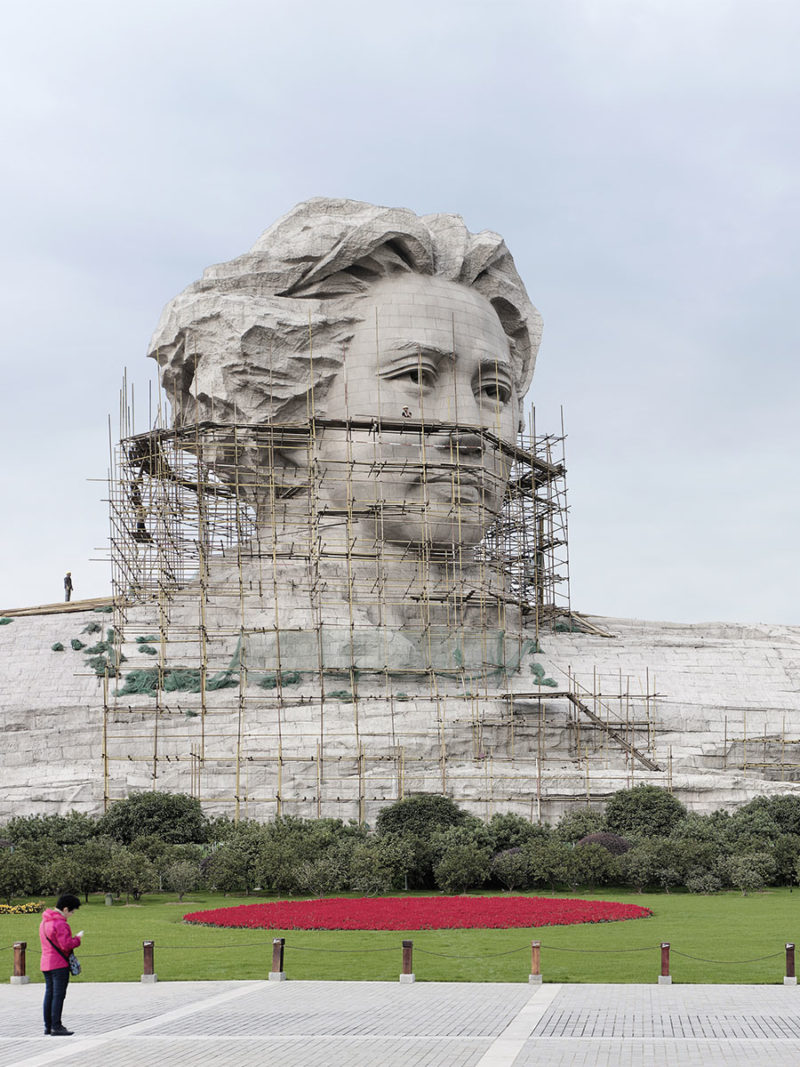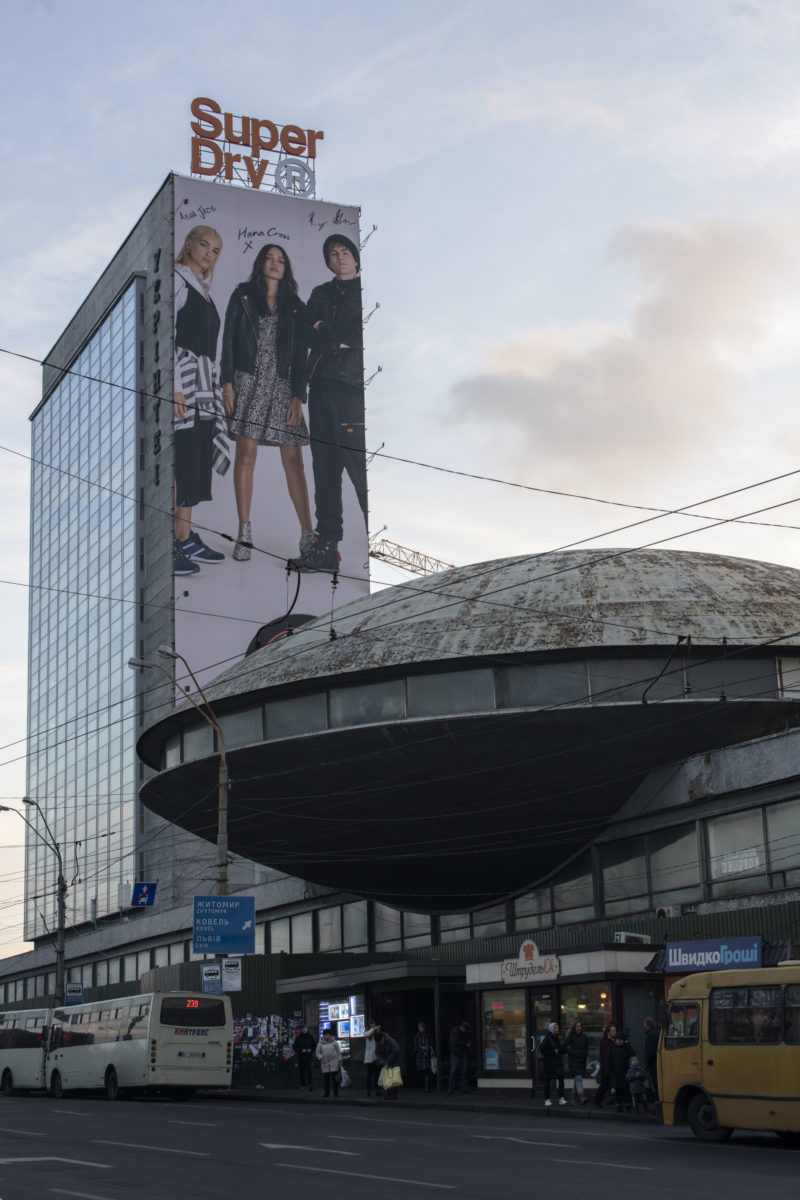
Antonovycha St, 180, Kyiv, Ukraine, 02000 Copy to clipboard
50.411567, 30.52481 Copy to clipboard
Temporarily closed
Tarilka is currently closed to the public due to ongoing renovations aimed at restoring and repurposing this iconic structure.
The project seeks to preserve its architectural significance while updating it for contemporary use.
No official reopening date has been announced.
Before you go
Photography: The building's unique architecture makes it a popular subject for photography. Early morning or late afternoon light can enhance your photos.
Safety: The vicinity is generally safe, but remain aware of your surroundings and keep personal belongings secure.
Best visit time
Visiting during daylight hours is recommended to fully appreciate the architectural details of the Tarilka building.
Early mornings or late afternoons offer softer lighting, ideal for photography.
Weekdays are typically less crowded, providing a more relaxed experience.
Directions
By car
Drive towards 180 Antonovycha Street in Kyiv. Limited street parking is available nearby, but spaces may be scarce during peak hours.
By public transport
Take the Kyiv Metro Line 2 (Blue Line) to the 'Lybidska (Либідська)' station. From there, it's approximately a 5-minute walk to the building.
Parking
Limited street parking is available in the vicinity. Arriving early or using public transport is advisable to avoid parking difficulties.
Introduction
Deservedly nicknamed the “Kiev flying saucer” or “Kiev UFO,” the Kiev Institute of Information is an authentic work of modernist architecture 1 that stole the limelight during the Soviet era. This awe-inspiring, alien-like piece of Soviet architecture has again come to the spotlight because it is being threatened by the mushrooming of modern shopping malls.
Let’s find out more about this modernist architectural masterpiece that deserves our attention and help to keep impressing future generations with its unique architecture.
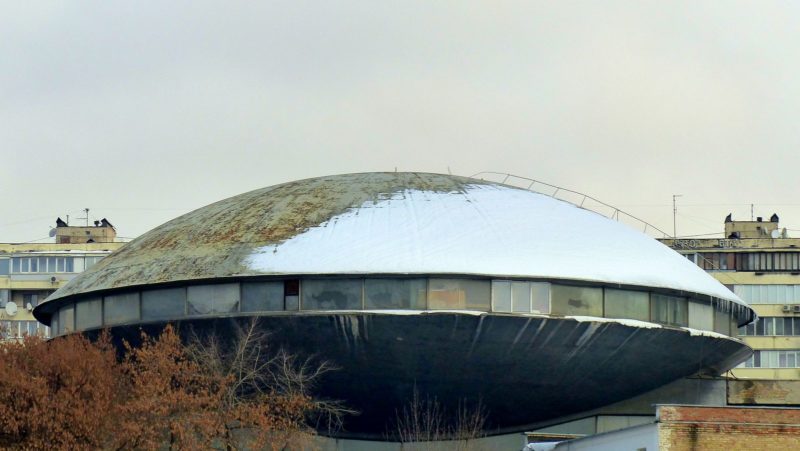
Tarilka – The Kiev Institute of Information
Tarilka, the Kiev 2 Institute of Information, is nestled on the famous Antonovycha Street in Kiev, Ukraine 3. The architectural piece was constructed in 1971 and is considered the true epitome of the second wave of the Soviet modernist architecture movement.
The UFO-esque building draws inspiration mainly from the infamous Space Race between the USSR and the United States of America. Although UFOs partly inspired the architecture of the modernist piece, the designers dreamed up a distinctively artistic 4 venue for performances, events, and concerts.
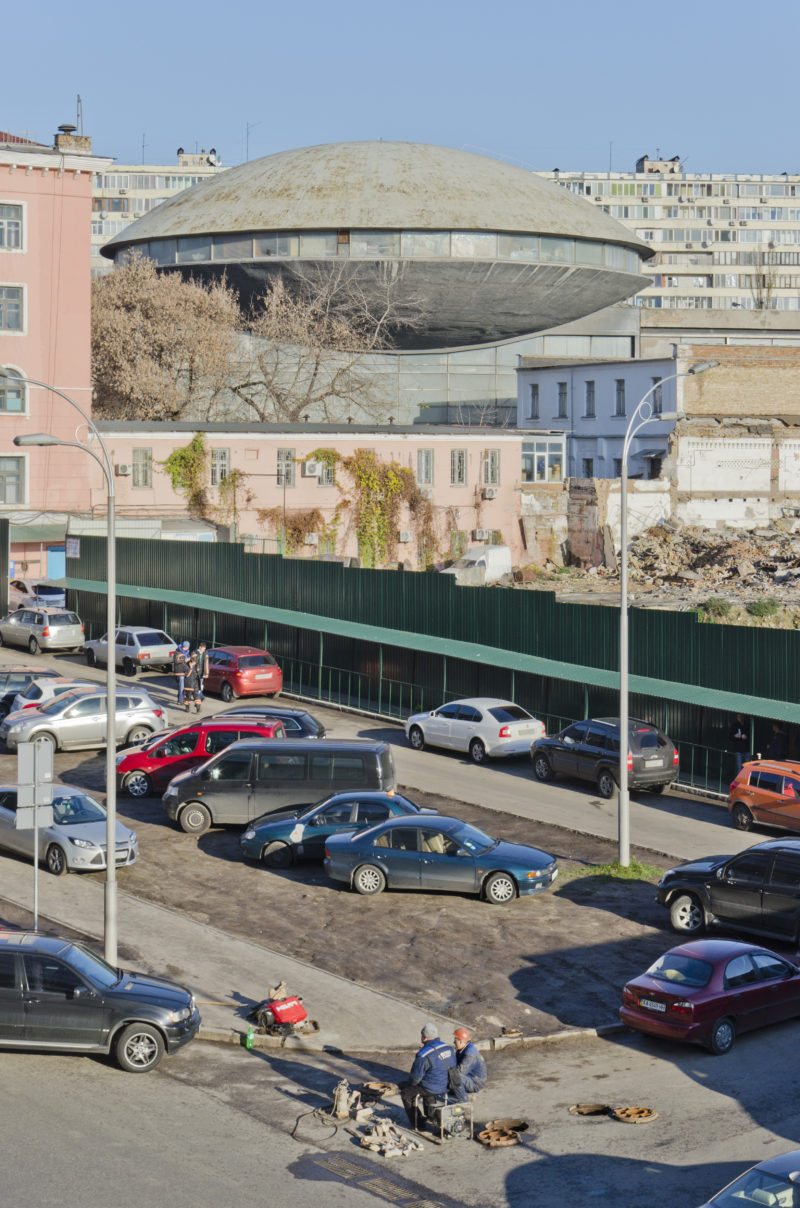
Ever since its inception, the purpose of Tarilka hasn’t changed much – it is still the home of the State Scientific and Technical Library, an old printing company, and the Ukrainian Institute of Scientific and Technical Expertise and Information (UkrISTEI).
The building also houses several libraries, archives, and warehouses in the lower end. Located nine meters below the ground level, the so-called “-9” basement includes all the installations that heat the building.
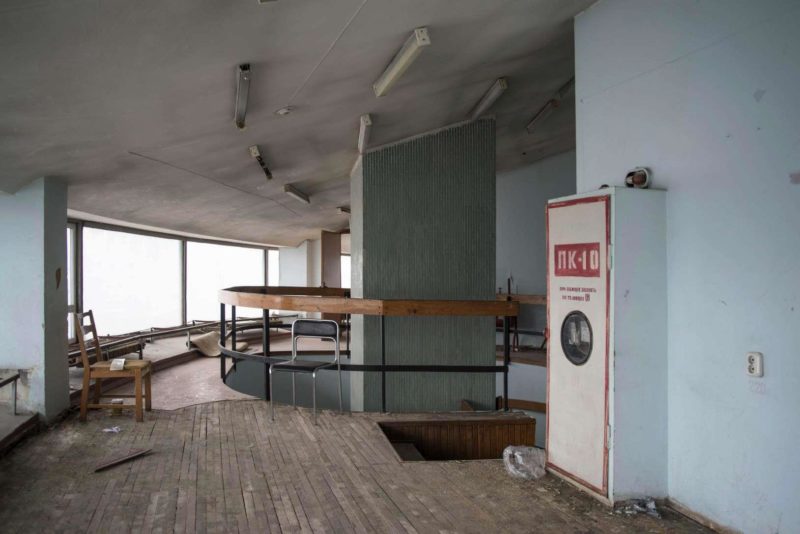
However, multiple floors of the Tarilka have been vacant and fallen into dereliction for years since the library, and the institute doesn’t occupy the whole complex. The unique shape of the architectural project not only exudes a sense of aesthetic fascination but has also provided the solution for the limited space allocated for the construction of the building.
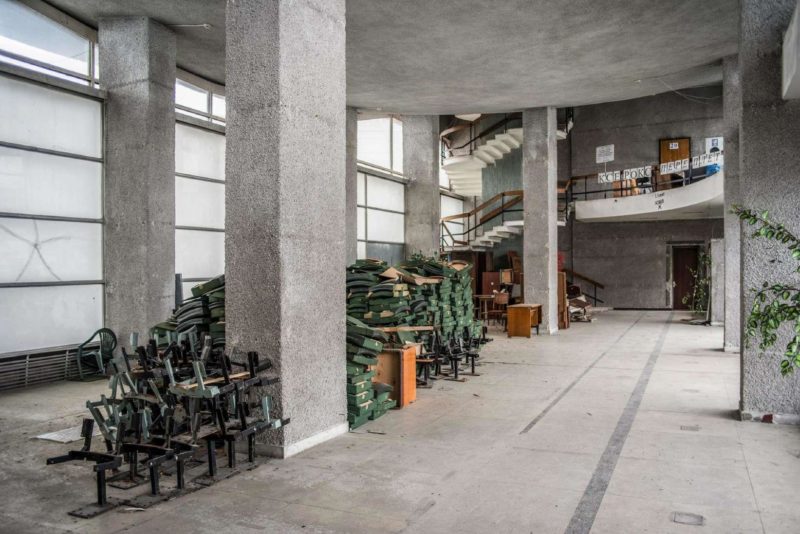
The designers and architects of the project decided to ingeniously raise the structure into the air and leave plenty of room beneath it for pedestrians and foot traffic.
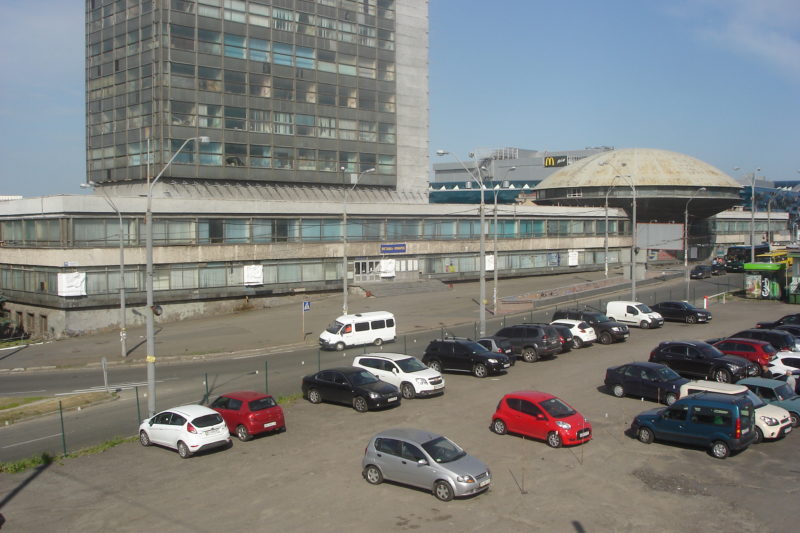
Standing on the Lybidska Square, the Kiev Institute of Information is a monumental project made up of a 16-story glass tower resting upon a slightly elongated, rectangular stylobate. A massive “Plate” that houses the institute’s conference hall sits atop the tower, elaborately appointed with bas reliefs.
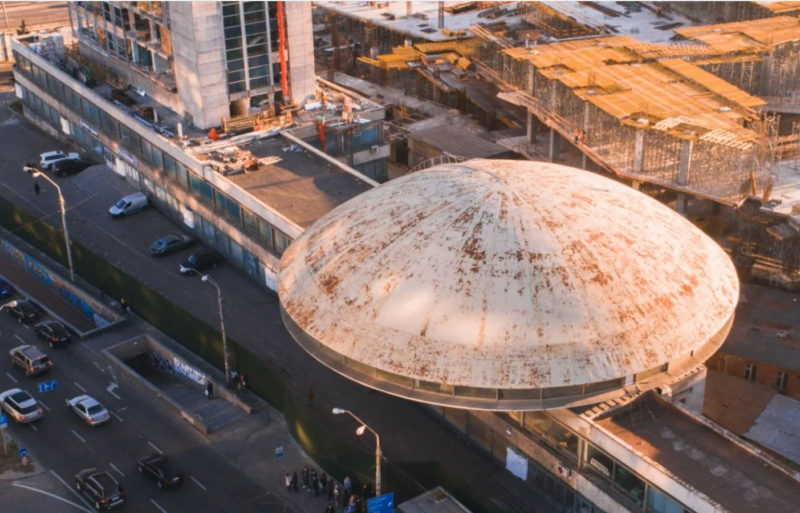
The “Plate” or “UFO Saucer” seems to float right above sidewalks, where pedestrians can freely meet, walkthrough, and whatnot. Today, the “Flying Saucer” is deemed to be one of the most outstanding architectural feats in Europe.
The conference hall tucked in the “Plate” segment of the project boasts fascinating acoustics and enables listeners to hear the full spectrum of sounds of performers and musical instruments without the help of electronic modulation. The reverse curvature of the suspended 5 hall generates such unique acoustics.
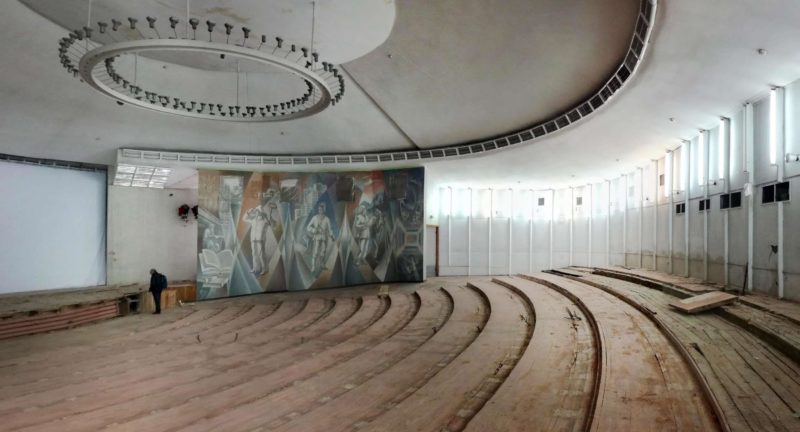
Meet the designers & architects
The UFO-shaped 6 Kiev Institute of Information is the brainchild of architects Florian Illich Yuriev 7 and Lev Novikov. The so-called “Flying Saucer” was conceived and designed by Florian Yuriev.
Besides being a world-renowned architect, Florian is also a poet, violinist, scientist, musician, composer, inventor, art critic, teacher, colorist, and famous public figure active in Kiev at the time of construction. With the “Plate,” the architect wished to depict the “synthesis” or amalgamation of arts by bringing together music, light, and color.
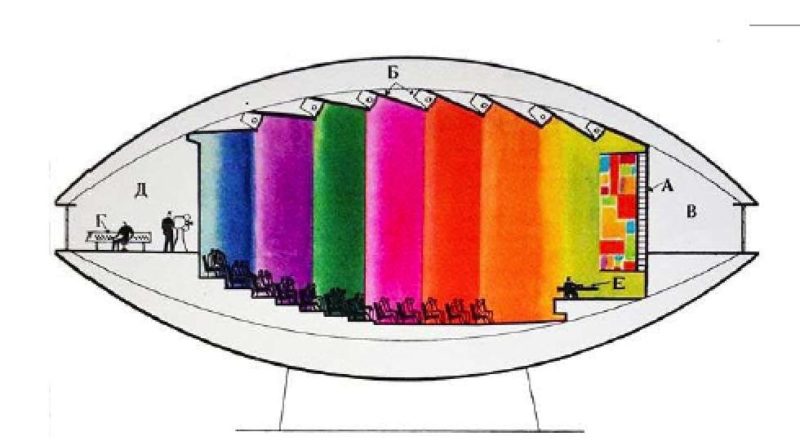
Florian was one of the pioneers and proponents of the theory surrounding “music of color”. This artistic concept 89 encompasses how colors can be perceived and could be merged into one harmonious architectural or art form/medium. Unfortunately, this concept and Florian art style didn’t fly well with the Soviet leadership. The Soviet authorities didn’t officially acknowledge this masterpiece, and the UFO-shaped structure was soon utilized as an ordinary movie theater and concert all at the UkrINTEI.
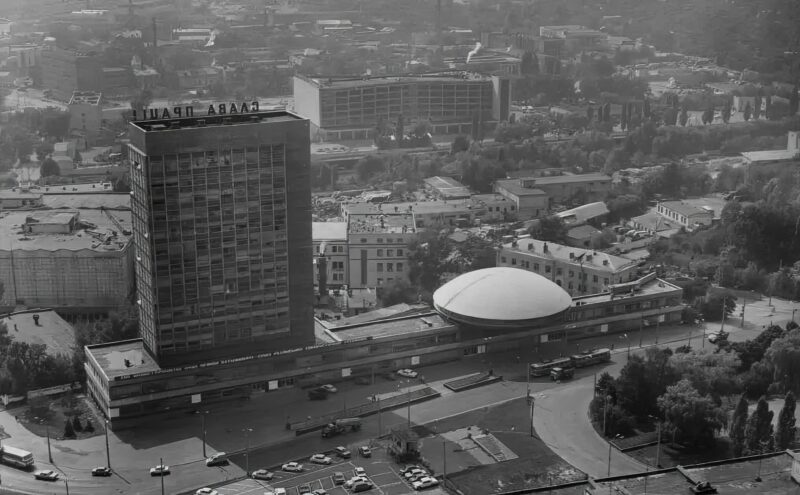
Florian Yuriev has been recognized with numerous accolades and awards for this architectural masterpiece, including the prize “For Innovation in Architecture 1011” for Tarilka’s “Plate.” According to the architect’s master plan for the project, the conference hall was designed to host performances and concerts that combine music, light, and color.
At this point, Florian had already amassed significant experience in architecture design. He had several design projects to his name, including the residential buildings on the Left Bank, office buildings, government restaurant Metro, and Khreschatyk metro station — to name a few.
The multi-talented architect was also behind the creation of the new emblem of Kyiv, although Soviet authorities did not immediately approve the new design. That’s because he wanted to remove the image of Lenin and replace it with a chestnut symbol.
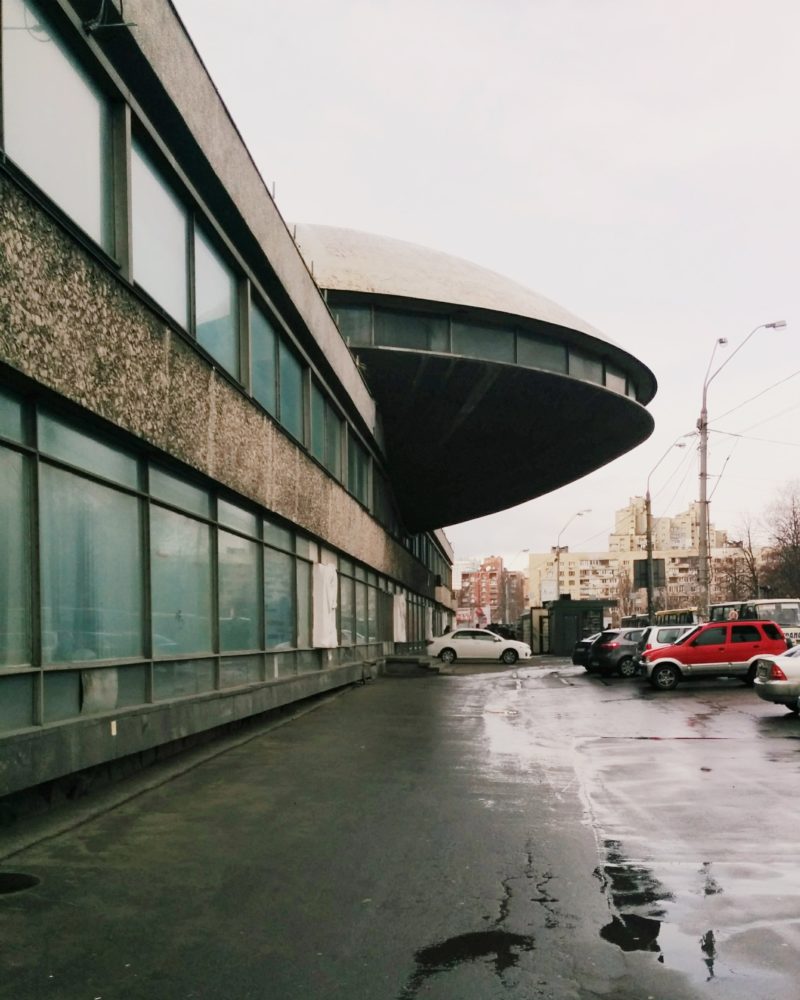
Concept & inspiration
The architects of the Kiev Institute of Information (Kiev UFO) – Florian and Lev Novikov – designed the building with inspiration drawn from the work of Oscar Niemeyer, a well-known Brazilian modernist. The latter architect was responsible for most building designs for Brasilia, a brand new city imagined and built from scratch as the future capital of Brazil 12.
Constructed in 1960, the Palace of the National Congress is one of the most popular and highly recognized works of Oscar Niemeyer. In this project, the architect unified the duo of chambers of the Brazilian Parliament, bringing together all the essential elements of the building, including an oversized parking garage, library, and restaurant. Interestingly, Brazilian senators chose to have their sessions in one of the “Plates” on the stylobate.

Instead of copying Oscar Niemeyer’s design in its entirety, Florian designed the Institute of Information with the “synthesis of the arts” in mind. He wanted to equip the building with a never-seen-before color music theater where performers would be able to perform musical numbers to the tune of color gradients on the screen lights.
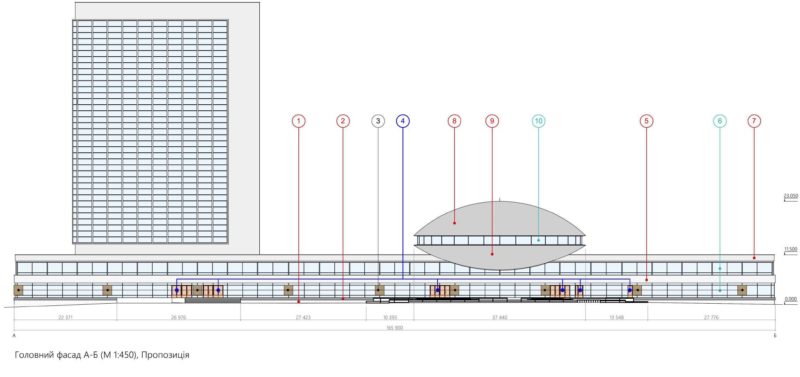
With that concept playing center-stage, the reinforced concrete lens of glasses with a metallic bowl rested at the base of the building. This created unique acoustics in the curved concert hall of the planned light. And the futuristic music theater was born.
Restoration
In the 1990s, the building began to deteriorate. Paint was peeling off the facade, rooms were starting to be vacant, and there wasn’t any money even for simple repairs. One building staff described the state as follows 1314:
It’s cold in winter, hot in summer, no air conditioning system, no batteries, completely rotten windows.
At age 90, Yuriev started a campaign 1516 that is trying to protect the Flying Saucer from becoming part of a shopping mall, fighting against powerful developers. Besides offering to assist in the restoration of the building, he asks for a public conversation and an immediate stop to the construction. Yuriev said 1718:
Reconstruction is not required for an architectural monument, restoration is required. Especially since the amount of work there is small – the building needs surface repair. The main function of the building should be preserved – information. The entertainment complex does not meet this function.
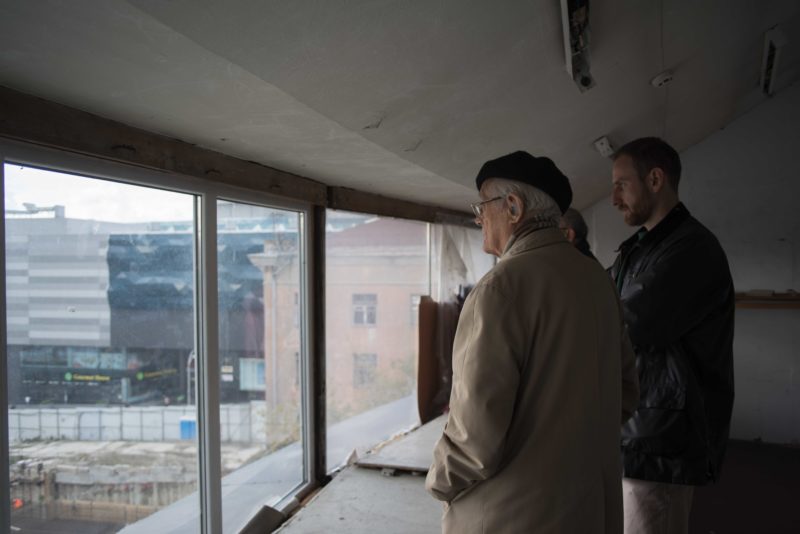
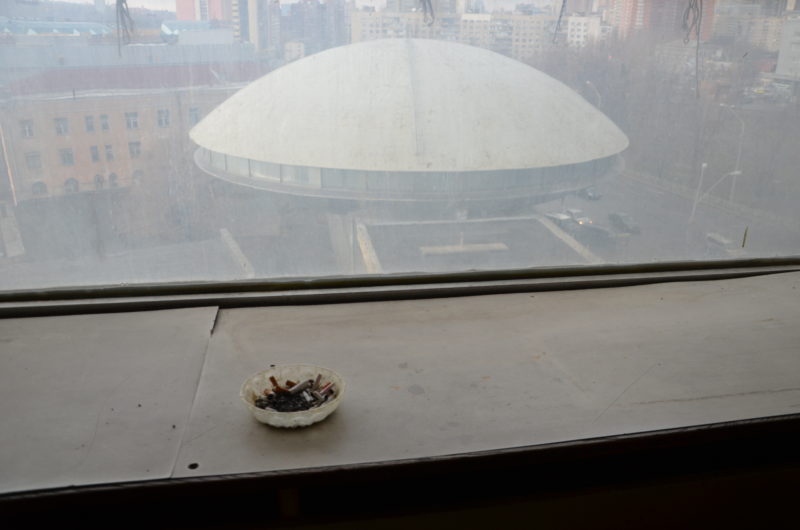
In the documentary film Facade Color: Blue (2019) about Yuriev’s masterpiece, the artist calls the demolition a tragic sign of blind progress of those who are not interested in the desire to make the impossible possible and to make the beautiful sensually experienceable. He faces the destruction of the “Flying Saucer” and ironically asks 1920:
Do we go forwards or backwards?
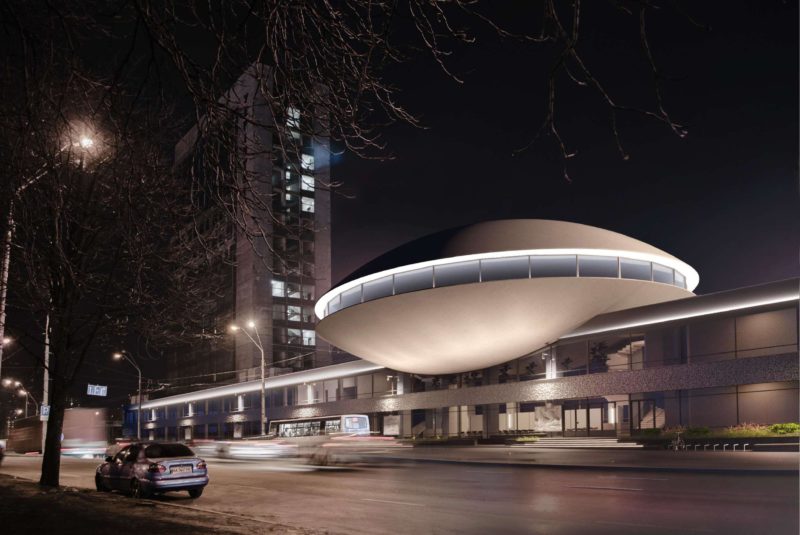

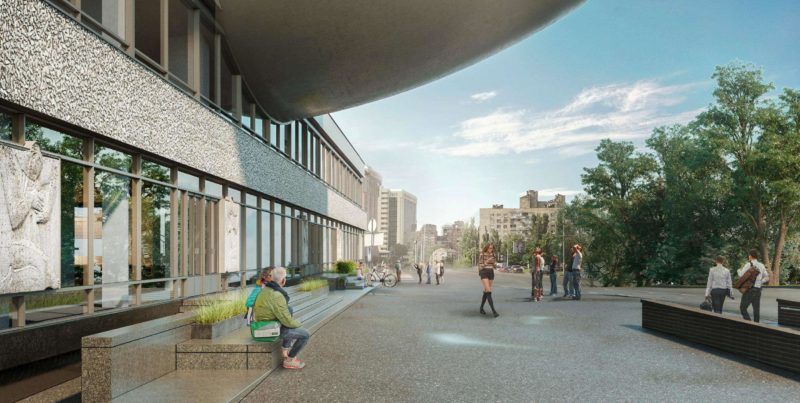
Conclusion
The UFO-shaped Kiev Institute of Information is undoubtedly one of the most inspirational and exciting European modernist pieces. However, for several years, it has been under the threat of modern shopping malls that have mushroomed around it.
It didn’t help that the construction materials and technology used were of sub-par quality since the project was built during the Soviet era. The upkeep budget has always been lean or non-existent, meaning the building is in dire need of repair and modern maintenance.
For too long, the building hasn’t earned official recognition as a protected architectural monument, to add insult to injury. Until 2020, the city of Kiev, which is currently under attack, claimed it didn’t have the financial muscle to maintain or repair it.
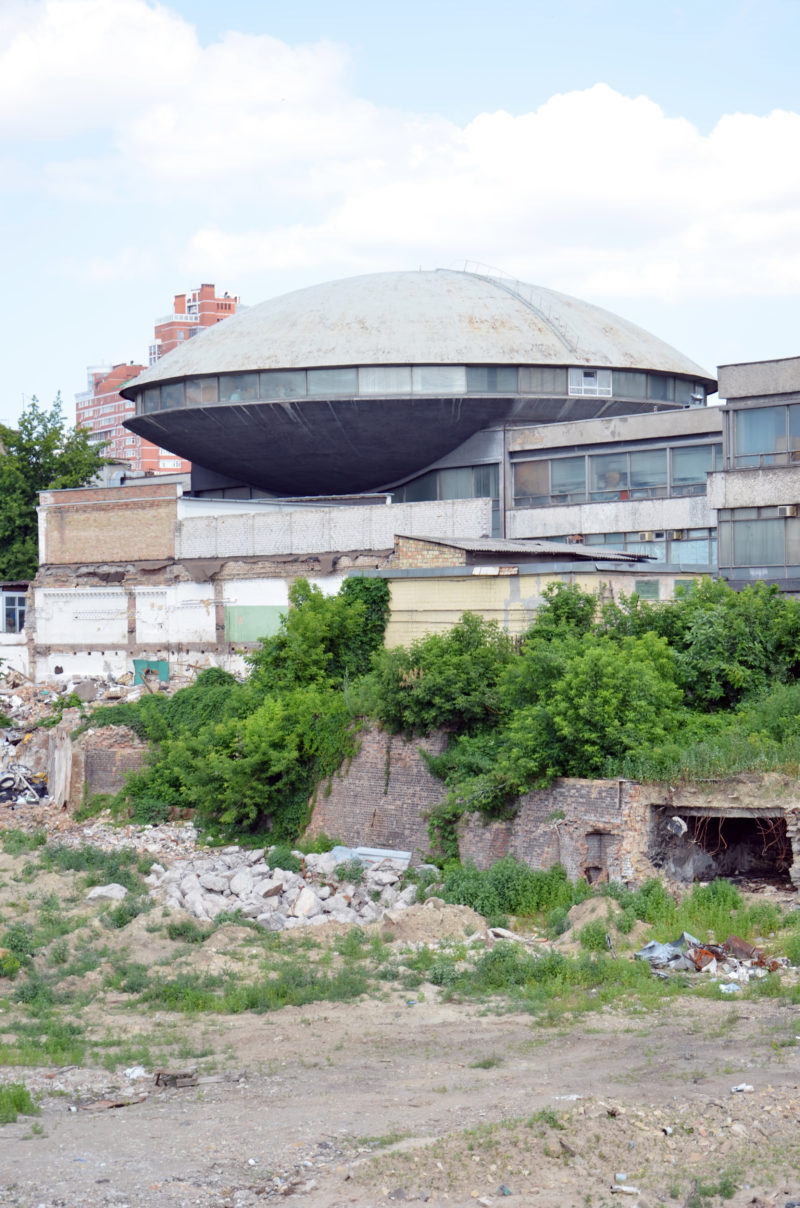
Eventually, in 2020, Alexander Tkachenko, Minister of Culture, gave Vitali Klitschko, Mayor of Kyiv, a deadline of five days 2122 to add the 1971 building to the list of newly discovered monuments of cultural heritage.
Consequently, it was finally granted its well-deserved status and as a first step to turning the building into a modern concert hall, the roof got painted 2324. Thankfully, the art and architecture community came together and asserted enough public pressure to save this precious masterpiece.
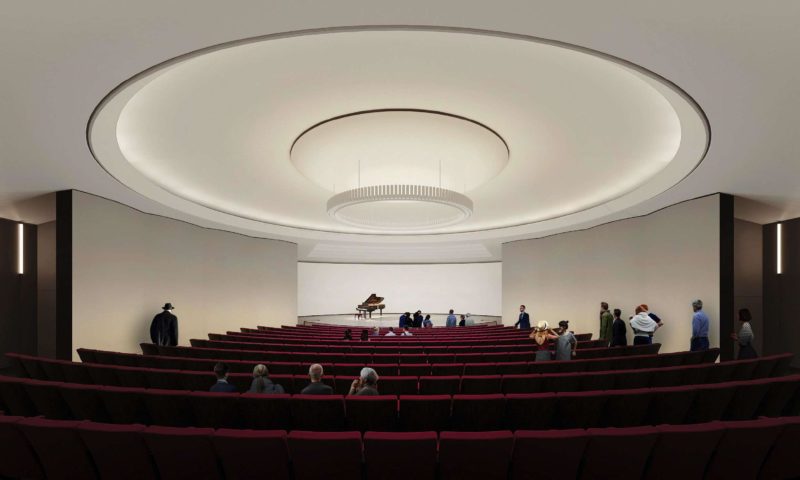
Explore nearby
Kiev, Ukraine
 The Kyiv Crematorium2 km away
The Kyiv Crematorium2 km away
 Nadav Kander's visit to ChernobylPhoto documentation (2004)98 km away
Nadav Kander's visit to ChernobylPhoto documentation (2004)98 km away

